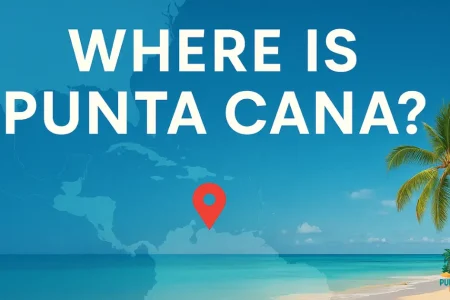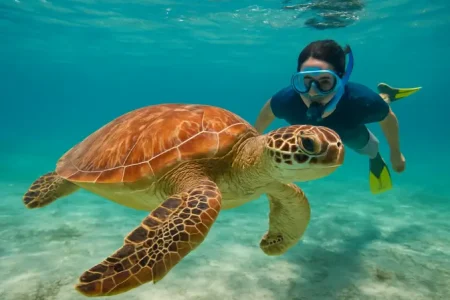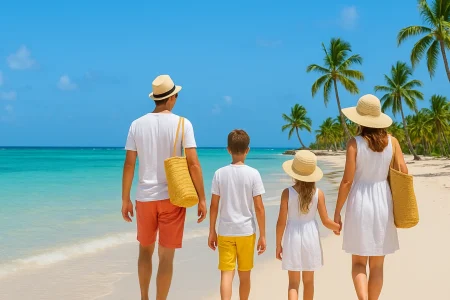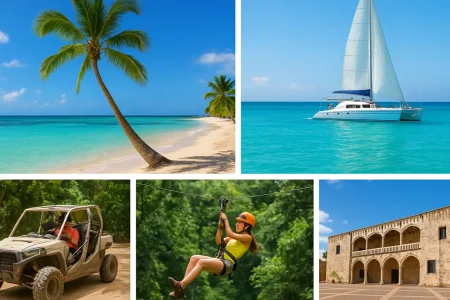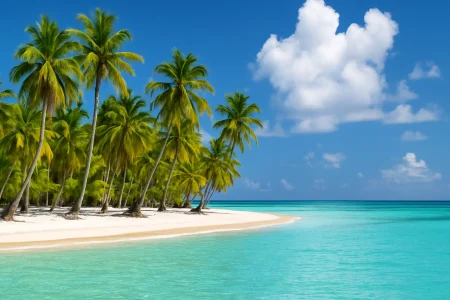Post Contents
- 1 What Is Sargassum and Why Does It Affect Punta Cana?
- 2 When Is Sargassum Season in Punta Cana?
- 3 Best time to avoid sargassum in Punta Cana
- 4 Does Every Beach in Punta Cana Get Affected by Sargassum?
- 5 What Can You Do If There’s Sargassum During Your Trip?
- 6 Explore Sargassum-Free Paradise: A Trip to Isla Saona
- 7 Tips to Avoid Sargassum on Your Punta Cana Vacation
- 8 Is Punta Cana Still Worth Visiting Despite the Sargassum?
- 9 FAQs About Sargassum in Punta Cana
Over the past few years, travelers planning a Caribbean escape have become more familiar with a natural phenomenon called sargassum—a type of seaweed that can sometimes accumulate on popular shorelines. While it poses no health risks, the presence of sargassum can impact beach aesthetics and swimming experiences.
If you’re considering Punta Cana for your next vacation, you might be wondering: Will there be seaweed on the beach? When is the best time to avoid it? And what can I do if it shows up during my stay?
This guide covers everything you need to know about sargassum in Punta Cana—when it happens, which beaches are least affected, and how to make the most of your beach getaway no matter the conditions.
What Is Sargassum and Why Does It Affect Punta Cana?
Sargassum is a type of brown algae that floats freely in the Atlantic Ocean. It forms massive mats that travel with ocean currents, and while it plays an important role in marine ecosystems by providing habitat for fish and turtles, it can become a nuisance when it washes ashore in large quantities.
In Punta Cana, this generally occurs when prevailing winds and sea currents carry the seaweed from the Sargasso Sea or along the Atlantic into the Caribbean coastline—especially during warmer months. When it piles up on beaches, it creates unpleasant sights, odors, and can make swimming less enjoyable.
When Is Sargassum Season in Punta Cana?
Although sargassum can appear any time of year, it’s most commonly seen between May and October. This period coincides with higher ocean temperatures and seasonal currents that favor seaweed drift toward the shores.
Best time to avoid sargassum in Punta Cana
The dry season from December through April typically sees minimal to no seaweed, making it an ideal period for travelers who want to enjoy clear waters and pristine beaches.
Does Every Beach in Punta Cana Get Affected by Sargassum?
Not all beaches are equally impacted. Geography plays a big role: beaches more exposed to eastern winds and currents are more likely to accumulate sargassum, while those located in sheltered coves or with stronger maintenance efforts remain cleaner.
Beaches More Likely to Be Affected:
- Bávaro Beach – Beautiful and expansive, but very exposed to open waters.
- El Cortecito – Popular with locals and tourists but often sees seaweed buildup.
- Cabeza de Toro – Occasionally impacted during peak season.
Beaches That Tend to Stay Clearer
- Juanillo Beach (Cap Cana) – Located in a sheltered area; generally well-maintained.
- Playa Blanca – Secluded and protected, offering calm, clearer waters.
- Uvero Alto – Less touristy and often escapes the worst of the seaweed.

What Can You Do If There’s Sargassum During Your Trip?
A bit of sargassum doesn’t mean your vacation is ruined. There are plenty of ways to still enjoy Punta Cana even if some seaweed is present:
 Choose a Resort with Excellent Beach Maintenance
Choose a Resort with Excellent Beach Maintenance
High-end resorts often have dedicated staff and equipment to remove sargassum daily. Look for reviews mentioning clean beaches or well-kept shorelines.
 Relax in Pools and Beach Clubs
Relax in Pools and Beach Clubs
Most resorts have stunning pools just steps from the beach, giving you the tropical feel without worrying about the water quality.
 Take a Day Trip to Seaweed-Free Destinations
Take a Day Trip to Seaweed-Free Destinations
Sometimes the best solution is to get away from the coastline altogether for a day—especially to areas less affected by sargassum.
Explore Sargassum-Free Paradise: A Trip to Isla Saona
Saona Island From Punta Cana
One of the most effective—and most memorable—ways to escape any seaweed conditions is by taking a boat excursion to Isla Saona.
This postcard-perfect island, located off the southern coast of the Dominican Republic, lies in a protected area of the Cotubanamá National Park. Due to its location and ocean currents, the beaches on Isla Saona are typically free of sargassum, showcasing clear turquoise waters and powdery white sand.

- Offshore location with minimal algae intrusion
- Calm, crystalline water ideal for swimming and snorkeling
- A chance to explore untouched beaches and natural pools
Many travelers consider a visit to Isla Saona the highlight of their Punta Cana vacation—not only as a way to avoid seaweed but as a way to see a more untouched side of the Caribbean.

Tips to Avoid Sargassum on Your Punta Cana Vacation
- Travel between December and April: This is the driest season, and sargassum levels are generally low.
- Book resorts in Cap Cana or Playa Blanca: These areas are naturally more protected from seaweed arrivals.
- Use live beach cams or sargassum forecast maps: Sites like Sargassum Monitoring provide real-time satellite updates.
- Plan excursions to the south coast: Areas like Isla Saona or Bayahibe are typically unaffected.
Is Punta Cana Still Worth Visiting Despite the Sargassum?
Absolutely.
Punta Cana remains one of the top destinations in the Caribbean for a reason. Even during sargassum season, most resorts take proactive steps to maintain their beachfronts, and there are countless other ways to enjoy your stay:
- Scenic excursions to islands, caves, and waterfalls
- World-class golf and spa experiences
- Local cultural tours, food tastings, and nightlife
- Pristine inland adventures like cenotes and ziplining
The presence of sargassum might require a little flexibility, but it shouldn’t deter you from experiencing everything this tropical paradise has to offer.
FAQs About Sargassum in Punta Cana
Is there seaweed in Punta Cana right now?
Sargassum levels vary weekly and seasonally. During the peak season (May–October), some beaches may see occasional buildup. Check real-time beach webcams or sargassum tracking websites before your trip.
Which beaches in Punta Cana are seaweed-free?
Cap Cana, Juanillo Beach, Playa Blanca, and parts of Uvero Alto typically remain clearer, especially outside the summer months.
Can you swim in the water if there’s sargassum?
Yes, but swimming may be less enjoyable if the water is murky or the seaweed is dense near the shore. Some people may also find the smell unpleasant.
Does Saona Island get sargassum?
Thanks to its location and the direction of the ocean currents, Isla Saona usually enjoys sargassum-free beaches, making it a great excursion choice.
When is the best time to avoid seaweed in the Dominican Republic?
Between December and April, when the water is cooler and seaweed blooms are minimal.
 Final Thoughts
Final Thoughts
Sargassum in Punta Cana is a natural and manageable part of the Caribbean beach experience. With the right planning—choosing your travel dates, location, and including some strategic day trips—you can enjoy crystal-clear waters, soft white sands, and everything this island paradise has to offer.
If you’re looking to escape the seaweed and discover a truly pristine beach, consider visiting Saona Island as part of your Punta Cana adventure. It’s not just a solution—it might be the highlight of your trip.


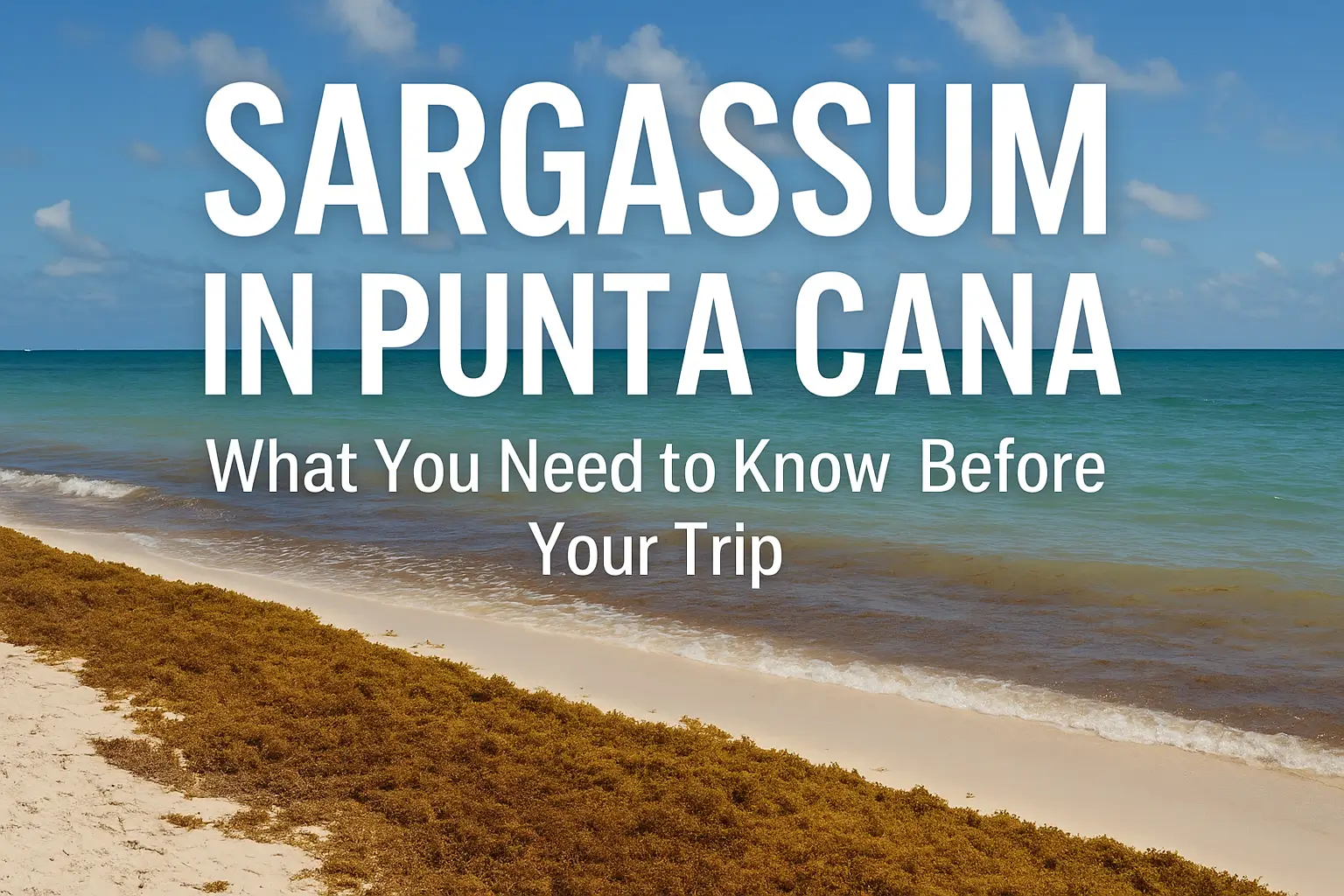





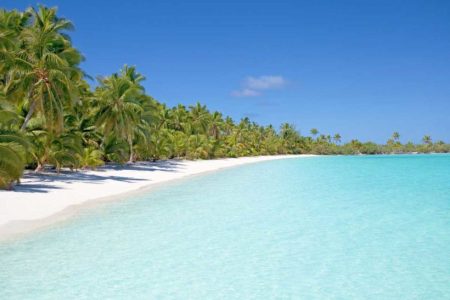
 Final Thoughts
Final Thoughts

